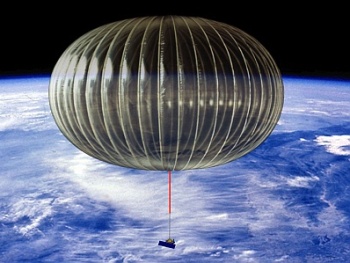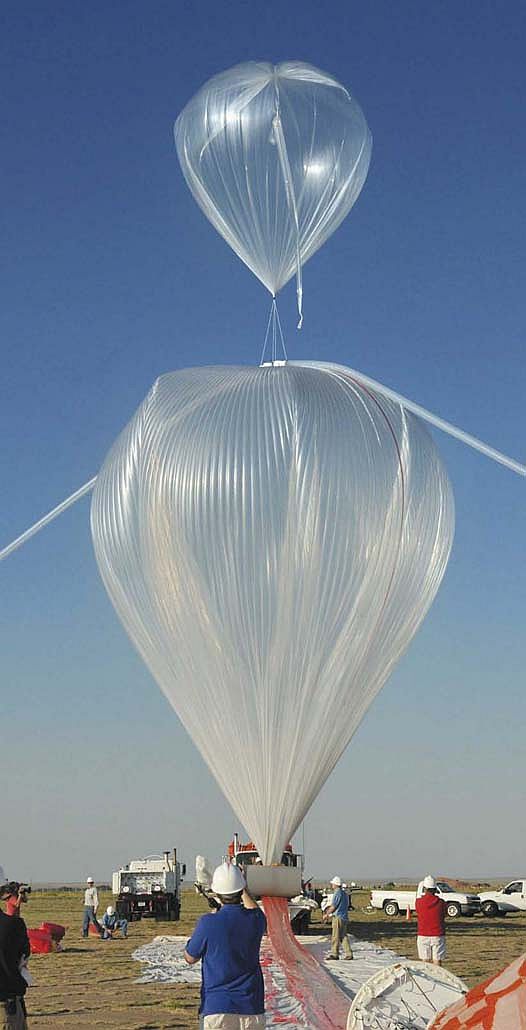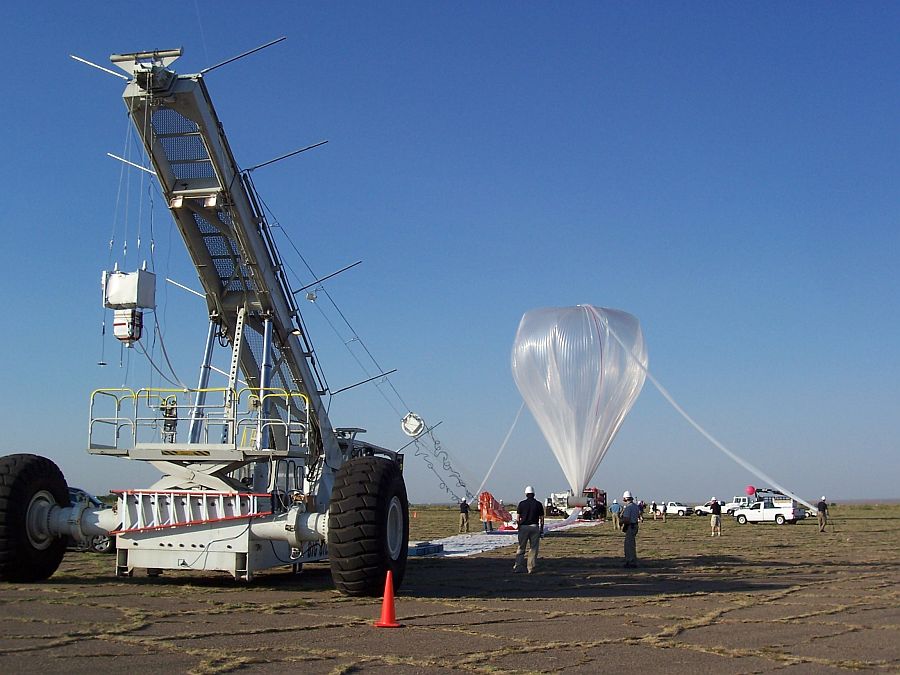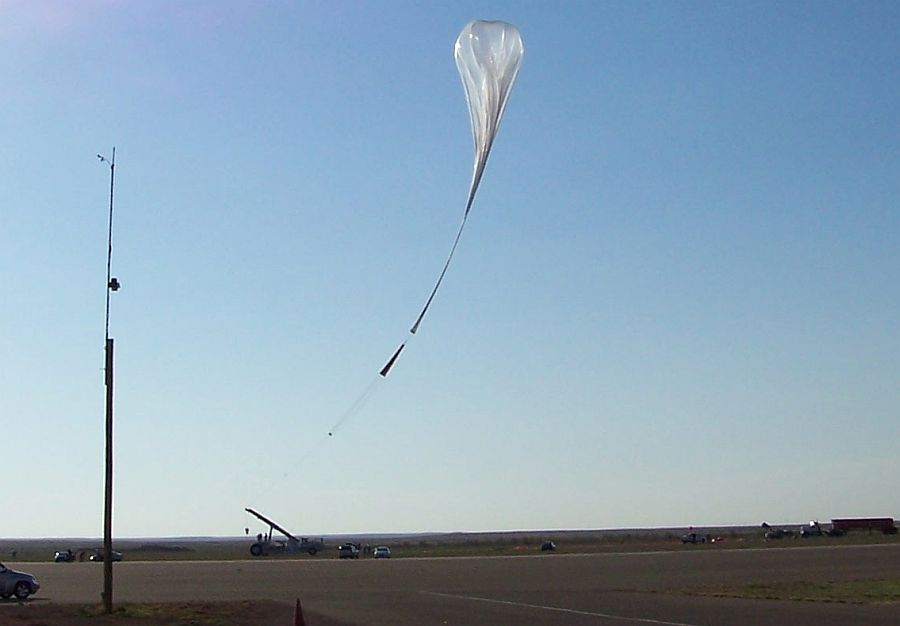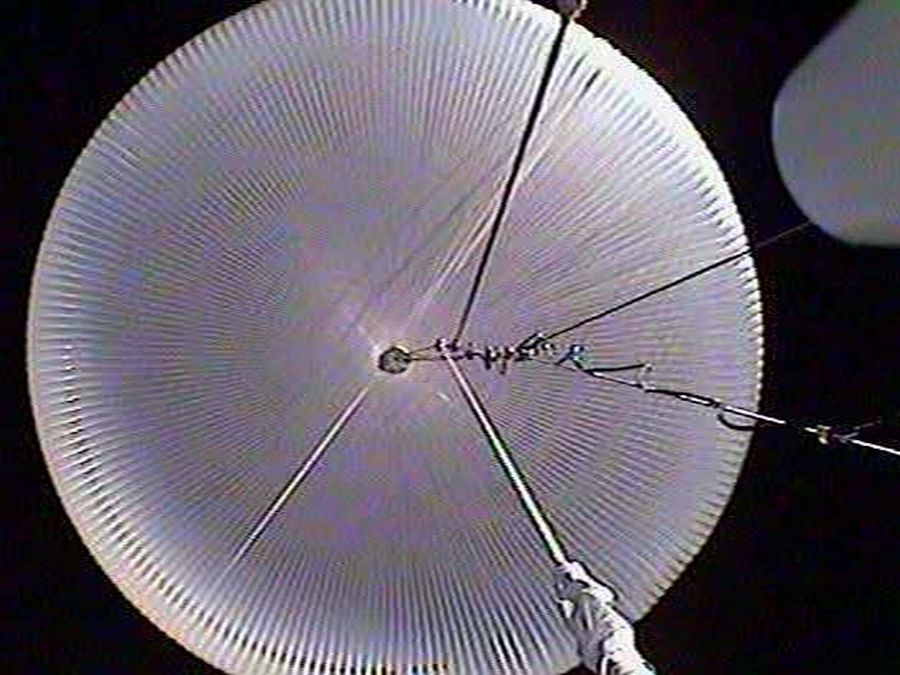Purpose of the flight and payload description
A project to develope a balloon system capable of providing scientific measurements for 100-day missions with floating altitude close to 35km transporting payloads of near 1.5 tons.
It is a super-pressure balloon made of a composite fabric (polyester + polyethylene film and fabric) that is filled with Helium and hermetically sealed. Meridional tendons provide additional rigidity to the envelope. The pressure inside the envelop is maintained above the ambient pressure at all times to keep the balloon afloat at a constant altitude. During daytime the internal pressure increases due to solar heating but the volume remains constant due to the rigidity of the envelope. At night the pressure drops due to infrared radiative cooling to space, but as long as the internal pressure remains above the ambient pressure, the balloon stays at the same altitude.
On the future, transported by stratospheric winds around the globe at 30m/s the ULDB would be make a full circunnavegation to Earth in about 2 weeks.
Details of the balloon flight
Balloon launched on: 6/22/2008 at 7:18 mdt
Launch site: Scientific Flight Balloon Facility, Fort Sumner, (NM), US
Balloon launched by: Columbia Scientific Balloon Facility (CSBF)
Balloon manufacturer/size/composition: Ultra Long Duration Balloon Aerostar - 2.006.000 ft3
Flight identification number: 586NT
End of flight (L for landing time, W for last contact, otherwise termination time): 6/22/2008
Balloon flight duration (F: time at float only, otherwise total flight time in d:days / h:hours or m:minutes - ): 4 h 7 m
For this flight the development team desired to fly a balloon structure whose design was based on the knowledge gained from the ground testing of scaled model balloons started after the latest failures and which took places between March and December 2007 at an airship hangar in Elizabeth City, North Carolina. These tests were first used to reproduce and analiçyze the failures using for the first time the photogrammetry apllied to study the balloon envelope, and then provided a razonable bed test to perform full inflations of the corrected designs. These test probed to be a reasonable intermediate stage test for the later larger flight structures.
Test flight 586NT was flown on June 22, 2008 from Ft. Sumner, New Mexico. The test flight balloon was a 200 gore pumpkin shaped balloon with an equatorial lobe angle of 55º. It had a volume of 2,000,000 ft3 and was designed to float at an altitude of 30.5 km with a suspended load of 295 kg. The at float dimensions of this balloon were 54.47 m in diameter with a height of 33.36 m. The primary goal of this test flight was full balloon deployment. The launch and ascent were nominal and within the predicted ranges. The balloon began to pressurize when it reached a steady float altitude of ~30.5 km. There was one undeployed area in the balloon as it reached float that looked very similar to a smaller version of the clefted features seen before on test models and flight balloons. As the balloon pressurized, this feature slowly deployed, fully coming out between 50 and 60 Pa, and the balloon was fully deployed.
The final differential pressure settled in around the predicted level of ~200 Pa. Before termination, the ballast was then dropped in several increments until all of it was expended. The balloon reached a maximum differential pressure of ~360 Pa and a final float altitude of ~31.3 km (~102,800 ft). It was left at this pressure for approximately 20 minutes before a commanded termination. The total flight time for test flight 586NT was 4 hours and 7 minutes. Both the balloon and the payload were recovered. This flight succeeded in both its primary goal of full deployment at float and all of its secondary goals except for a diurnal flight.
The success of this flight and the lessons learned paved the way for the desired next steps of increasing the total suspended load and an increase in target float altitude.
External references
- ULDB website - Balloon Programe Office NASA Wallops flight facility
- The NASA super pressure balloon - A path to ?ight Advances in Space Research 44 (2009) 23-38
3597If you consider this website interesting or useful, you can help me to keep it up and running with a small donation to cover the operational costs. Just the equivalent of the price of a cup of coffee helps a lot.

